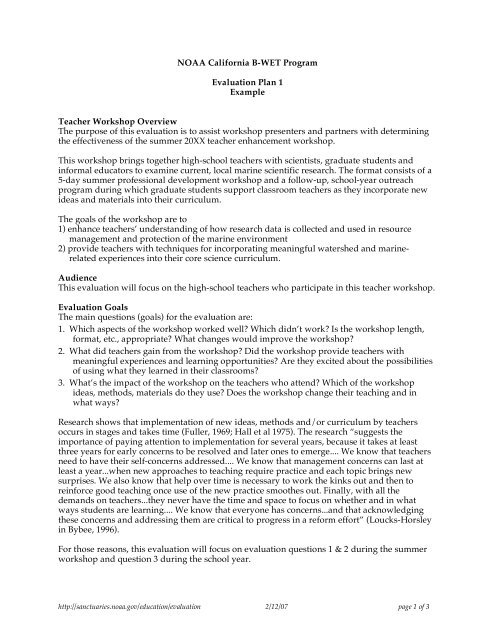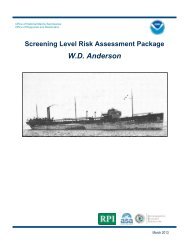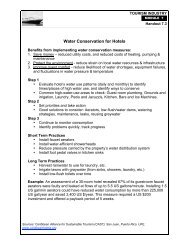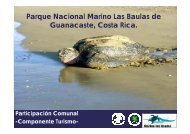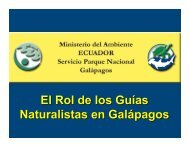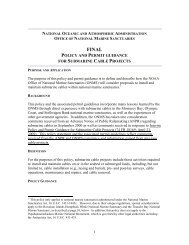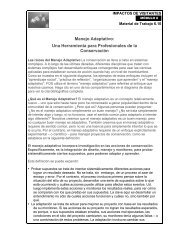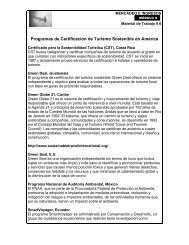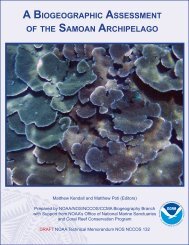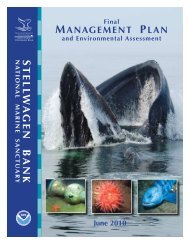NOAA California B-WET Program Evaluation Plan 1 Example ...
NOAA California B-WET Program Evaluation Plan 1 Example ...
NOAA California B-WET Program Evaluation Plan 1 Example ...
Create successful ePaper yourself
Turn your PDF publications into a flip-book with our unique Google optimized e-Paper software.
<strong>California</strong> B-<strong>WET</strong> <strong>Program</strong> Eval Website Document (pdf)<strong>Evaluation</strong> Design and Time TableTo gather the data needed to answer the evaluation questions, all teacher participants willcomplete a pre-workshop survey (see Appendix 1) on the first day of the workshop. At the endof each day, we will ask teachers for feedback on the day’s events and activities via a surveyform (see Appendix 2), then discuss their concerns or questions. On the last day of theworkshop, all teacher participants will complete a post-workshop survey (see Appendix 3).During the school year, we will ask teacher participants to complete a follow-up survey(Appendix 4) to determine what from the workshop they have implemented.SchematicTiming May 20X1 Monday,July XXTuesday thruThursdayFriday,July XXMay 20X2finalizeevaluationplan andinstrumentspreworkshopsurveydailyfeedbacksurvey &discussionpostworkshopsurvey ofparticipantsfollow-upsurvey ofparticipantsData Tallying & AnalysisThe surveys (Appendices 1 through 4) use a mix of questions (items) to collect qualitative andquantitative data. Responses to qualitative items will be categorized, then tallied. All responseswill be reported as frequencies and percentages of responses in each category. Responses toquantitative (rating-scale) items will be tallied and reported as frequencies and averages.Data from the pre-workshop survey will be compared to responses on the post-workshop andfollow-up surveys to track changes in participants over time.ReferencesFuller, F.F. (1969). Concerns of teachers: A developmental conceptualization. American Educational Research Journal6(2): 207-226.Hall, G.E. et al. (1975). Levels of use of the innovation: A framework for analyzing innovation adoption. Journal ofTeacher Education 26(1): 52-56.Loucks-Horsley, S. (1996). The concerns-based adoption model (CBAM): A model for change in individuals. In R.Bybee (Ed.) Professional development for science education, a chapter in National Standards & the ScienceCurriculum. Dubuque, IA: Kendall/Hunt Publishing, Company.Newhouse, C.P. (2001). Applying the concerns-based adoption model to research in computers in classrooms. Journalof Research in Technology Education (JRTE) 33(5).http://sanctuaries.noaa.gov/education/evaluation 2/12/07 page 2 of 3
<strong>California</strong> B-<strong>WET</strong> <strong>Program</strong> Eval Website Document (pdf)Appendices Not IncludedIn this <strong>Example</strong>http://sanctuaries.noaa.gov/education/evaluation 2/12/07 page 3 of 3


